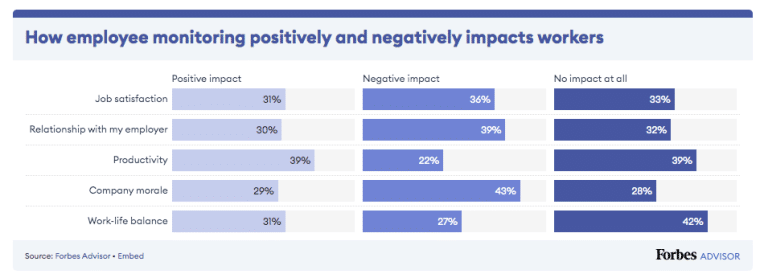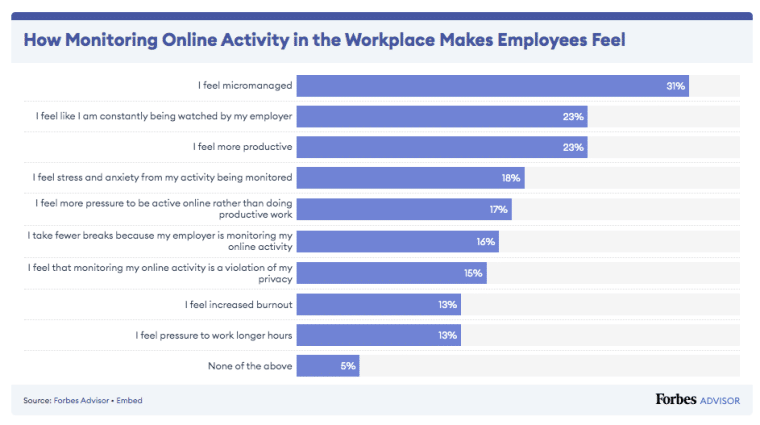In the era of hybrid or fully remote work, a new trend has emerged as employers try to monitor the productivity of workers who are not physically present by relying on software that tracks their activities.
Most workers have not embraced this practice as it is considered harmful for both their privacy and autonomy and this has led to incidents where people have tried to cheat the system. The methods to pull this off are getting increasingly creative as employees push back on being spied on.
Work Monitoring Tools Became Popular During the Pandemic
Since the start of the pandemic, there has been an increase in the adoption of employee monitoring software. The latest surveys indicate that at least a third of medium-to-large companies in the United States have embraced this type of software since 2020 when the health crisis began.

As a result, statistics suggest that around 43% of workers in America are being subject to this practice, which involves being monitored for hours throughout the day to ensure that they are actively working and not wasting time on personal things, watching Netflix (NFLX), or playing games on the internet while they are being paid.
In some cases, the level of vigilance goes as far as to keep tabs on the websites that the employee visits during working hours. Half of employees highlight that their work hours are being tracked and that screenshots of their computers are periodically taken to ensure that they are spending time on work-related tasks.
Moreover, the most sophisticated – and perhaps invasive software – provides reports to the employer regarding the files that the worker is accessing, email activity, and video records of how certain apps are used.
In the most extreme case, call records are transcribed to ensure that employees are not calling relatives. This applies primarily to call center and customer support jobs.
This practice has been widely embraced as statistics show that remote employees can become quite distracted without proper supervision.
A report from the Harvard Business Review (HBR) indicated that “monitored employees were substantially more likely to take unapproved breaks, disregard instructions, damage workplace property, steal office equipment, and purposefully work at a slow pace.”
However, the report also highlights some extreme practices can backfire in some cases as employees have been getting increasingly creative to find ways “to appear busy”.
Huge Impact on Workplace Dynamics
According to statistics provided by Forbes Magazine, nearly a third of the employees they surveyed feel very comfortable with these monitoring tools. However, a quarter of the respondents felt a certain level of discomfort with this practice.
What appears to be more worrying is that the majority of the people who responded to the survey (59%) agree that there are ethical considerations that can be concerning and 27% manifested that they would immediately quit their job if their employer demanded the use of a surveillance tool.
The reactions and perceptions regarding the impact of this software on workers’ morale and satisfaction are mixed as 43% consider that it is negatively impacted while 39% feel that it makes employees more productive.
Finally, a troublesome 39% of respondents said that the mandatory use of these tools negatively impacts their relationship with their employees.
For employers, although these tools are not currently considered the ultimate authority to assess an employee’s perceived productivity, bosses have been increasing their reliance on them to both terminate workers and review their compensation.
Also read: Best HR Software – 8 HR Services for your Business 2024
“There has been a growing troubling trend of excessive surveillance in corporate America,” A.J. Mizes, Chief Executive Officer of Human Reach, said to the South China Morning Post.
Employee Workarounds Include Using Cheap Mouse Jigglers
As workers feel increasingly spied on, some have found innovative ways to be perceived as productive and a quarter of those surveyed by Forbes indicated that they pretended to be online while they were actually engaged in non-productive activities.
Meanwhile, 11% responded that they have attempted to use software that fools these work monitoring tools.
The techniques used to perform these stunts include buying a mouse jiggler, a device that costs less than $12 on Amazon and that simply moves the cursor every now and then to prevent the computer from going to sleep mode.
Meanwhile, others have opted to open a PowerPoint slide and click it periodically to simulate that they are actively reading it while they are taking a quick break. Other practices include opening a note-taking application and filling an endless number of pages with a single letter or putting up a live streaming feed on a second monitor to keep the computer awake.
In one notable incident, the US banking giant Wells Fargo reportedly fired an undisclosed number of employees for faking their work activities by faking keyboard inputs. The bank stated that their goal was to create the impression that they were working.
Some of these employees, the BBC reports, had been with the company for five years or less. The report cites that over a dozen of the bank’s workers were affected by the decision.
Business Leaders Feel that Hybrid Arrangements Lead to Inefficiency

In the United States, the latest surveys indicate that around a third of employees are engaged in a hybrid arrangement while only 13% of full-time workers are fully remote.
According to a report from Microsoft (MSFT), employers have grown more paranoid than ever about keeping hybrid or remote workforces and 85% of those who responded to one of the company’s surveys said that they question wheter these arrangements are truly productive.
Meanwhile, employees who are monitored report that they feel higher anxiety and stress levels while 16% of them report that they take fewer breaks due to the pressure that the software puts on them.
Moreover, a third of those surveyed feel micro-managed, perceiving that every keystroke is being observed and scrutinized. This causes harm and erodes the trust between employees and employers.
The Future of Workplace Monitoring: How to Find the Right Balance?
What appears to be clear is that workplace surveillance software is here to stay – at least until a better methodology emerges. However, the short-term impact that these tools have on employee satisfaction, productivity, and other similar workplace metrics may deter employers from taking things to the extreme.
Employees have expressed their discomfort with being spied on and some have resorted to unethical methods to cheat the system in response to their distress.
As remote work keeps evolving, the best alternative for companies, in some cases, is to keep track of results instead of hours and completed assignments instead of tracking employee’s presence in front of their computers.
However, the challenge remains for jobs that demand constant interaction with customers like support roles where workers are paid to stay active throughout the day.
